Stump Grinding & Stump Removal
TREE REMOVAL
Stump grinding and stump removal are two common techniques used to eliminate tree stumps from your property, each with its own set of advantages and drawbacks.
Stump grinding involves using a specialized machine to shred the stump into small wood chips. This method is relatively quick and efficient, often leaving behind mulch that can be used to fill in the hole left by the stump. However, it may not completely eradicate the stump’s roots, leading to potential regrowth or issues with landscaping.
On the other hand, stump removal entails physically excavating the entire stump, including its roots, from the ground. While this method ensures complete elimination of the stump, it is more labor-intensive and can result in a larger hole that needs to be filled and leveled afterward. Additionally, stump removal may be more expensive than grinding due to the extra time and effort involved.
Before deciding between stump grinding and removal, consider factors such as the size and location of the stump, your budget, and the desired outcome for your landscape. Consulting with a professional tree service can help you determine the best course of action based on your specific needs and preferences.
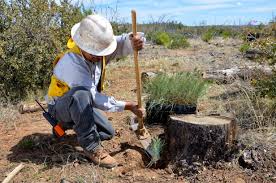
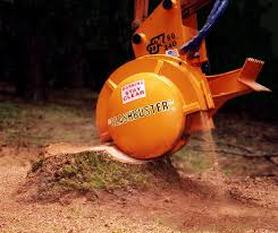

Stump Grinding Vs Stump Removal
When deciding between stump grinding and stump removal, consider the long-term effects on your landscape. Stump grinding involves grinding the stump into small wood chips, which are then mixed back into the soil. This process helps enrich the soil and promotes new plant growth. On the other hand, stump removal requires extracting the entire stump from the ground, leaving a hole that needs to be filled. While stump removal provides immediate results, it can disrupt the surrounding landscape and take longer for the area to fully recover.
At our company, we believe that stump grinding is often the preferred choice for maintaining a healthy and aesthetically pleasing landscape.
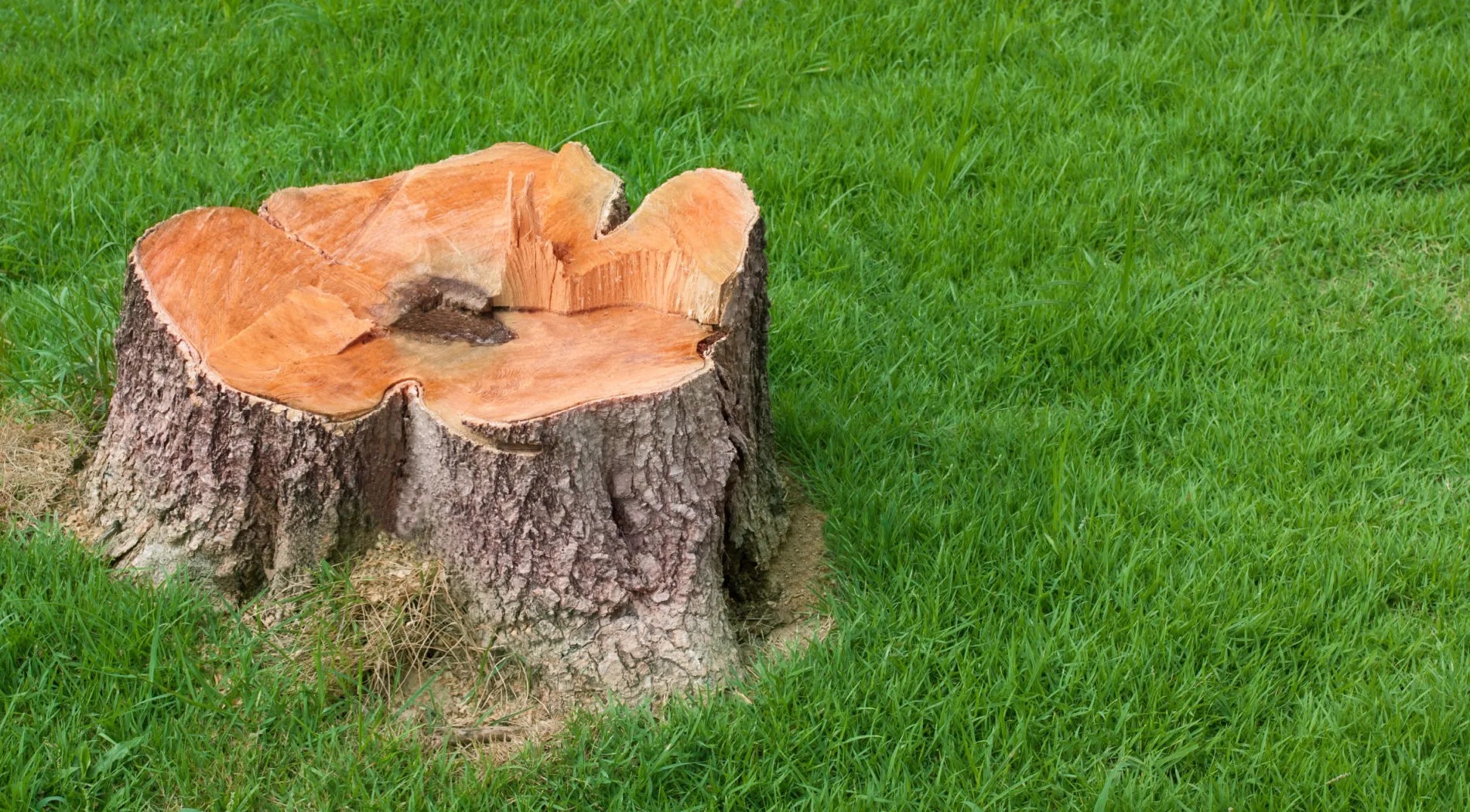
By grinding the stump, you not only eliminate the visible eyesores but also improve the overall health of your soil. The wood chips left behind decompose over time, releasing nutrients back into the ground and encouraging the growth of new plants or grass.Stump grinding is a more cost-effective and less labor-intensive option compared to stump removal. Our team of professionals can quickly and efficiently grind down the stump, minimizing any disturbance to the surrounding area. This ensures that your landscape can return to its former beauty in a shorter amount of time, allowing you to enjoy your outdoor space sooner rather than later.
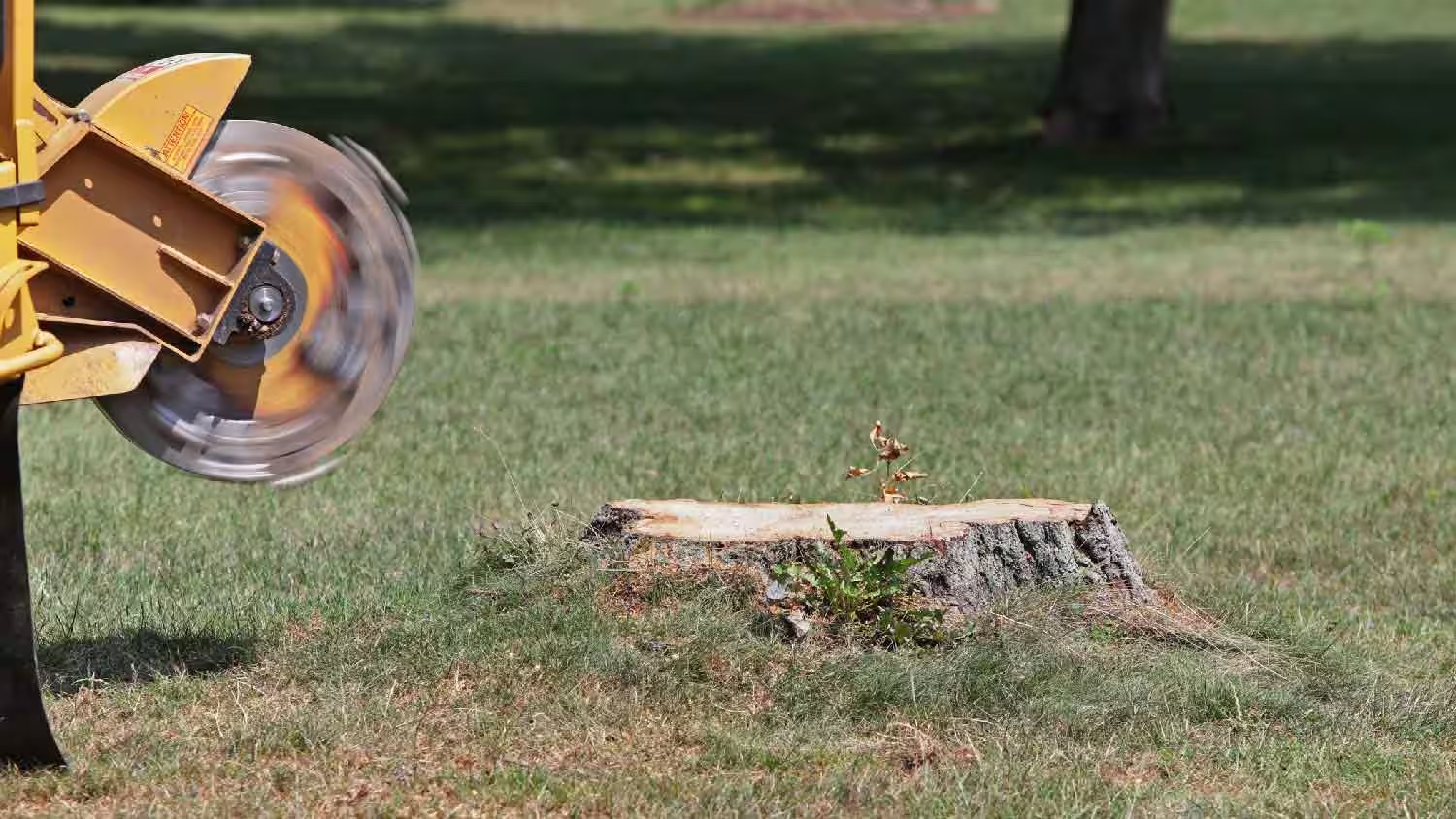
Benefits of Stump Grinding
Stump grinding enhances soil health and promotes new plant growth by grinding the stump into small wood chips that decompose over time. This process not only eliminates the unsightly remnants of tree removal but also enriches the soil, providing nutrients for surrounding plants to thrive. The wood chips left behind act as a natural mulch, helping to retain moisture in the soil and prevent weed growth. As these wood chips break down, they release organic matter back into the earth, fostering a fertile environment for new vegetation to take root.
Furthermore, stump grinding is a cost-effective and efficient solution that saves time and effort compared to traditional stump removal methods. By grinding the stump below the surface, it eliminates the need for extensive digging and minimizes the disturbance to the surrounding landscape. This means less labor and restoration work, making it a convenient option for those looking to reclaim their outdoor spaces without the hassle of a major cleanup.
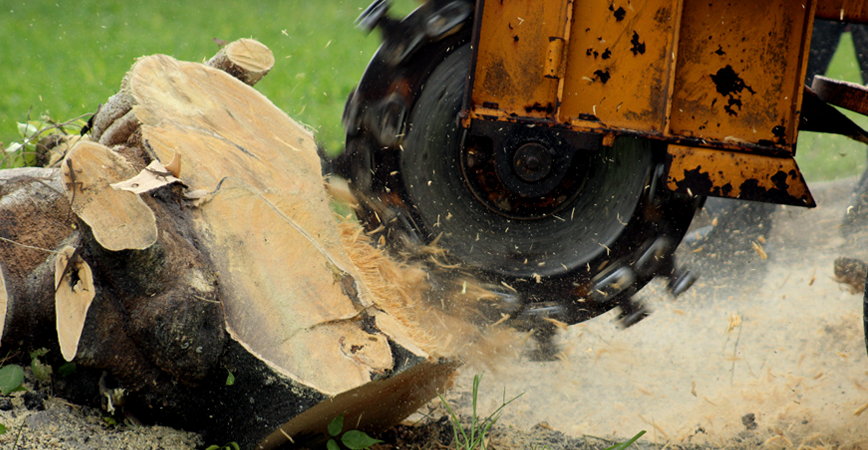
Benefits of Stump Removal
Removing stumps enhances the aesthetic appeal of outdoor spaces and prevents potential hazards caused by tripping or mowing over leftover tree remnants. At our core, we all seek to create environments that are not only visually appealing but also safe for ourselves and our loved ones. By choosing to remove stumps from our yards, we are actively contributing to the overall sense of belonging and community within our neighborhood.
Imagine walking through a beautifully landscaped garden or hosting a gathering in a backyard free of obstructions.
Stump removal opens up possibilities for landscaping projects, allowing us to transform our outdoor spaces into areas where we can relax, play, and connect with nature.The absence of stumps creates a seamless and inviting environment that encourages us to spend more time outdoors, fostering a sense of togetherness with those around us.Moreover, eliminating stumps can prevent accidents waiting to happen. No one wants a guest to trip over a hidden tree stump during a social gathering or for a lawnmower to sustain damage while trying to navigate around these obstacles. By taking the proactive step to remove stumps, we demonstrate our commitment to the well-being and safety of our community. In essence, stump removal is not just about aesthetics; it is about creating spaces where everyone feels a sense of belonging and security.
Factors to Consider
Size and Location of the Stump
When contemplating stump grinding or removal, it’s crucial to consider various factors that can impact the process and outcome. One of the primary considerations is the size and location of the stump itself. Larger stumps inherently present more significant challenges, often requiring specialized equipment and expertise to effectively remove or grind them down. The size of the stump can directly influence the overall cost and timeline of the project, as larger stumps typically demand more resources to address adequately.Additionally, the location of the stump plays a pivotal role in determining the approach to its removal. Stumps situated near structures, utilities, or delicate landscaping demand a more cautious and precise method to avoid causing damage. In such cases, careful planning and execution are essential to ensure the safety of surrounding structures and minimize disruption to the landscape.
Repurposing Wood Chips
An additional aspect to consider is the potential for repurposing the wood chips generated during stump grinding. Instead of disposing of the wood chips as waste, they can be utilized in various beneficial ways. Wood chips can be used as mulch to enrich soil quality, suppress weed growth, and retain moisture, promoting healthy plant growth in the area. Alternatively, they can be composted to produce nutrient-rich organic matter for gardening or landscaping purposes. By repurposing wood chips, you not only minimize waste but also contribute to sustainable practices that benefit the environment.When contemplating stump grinding or removal, it’s essential to consider a range of factors that encompass the size and location of the stump, the intended land use after removal, and the environmental impact of the chosen removal method. By carefully evaluating these factors and making informed decisions, you can ensure that the stump removal process aligns with your specific needs and goals while minimizing adverse effects on the environment.
Environmental Impact
The environmental impact of stump removal should not be underestimated. Certain methods of stump removal, such as chemical treatments, can have adverse effects on the surrounding flora and fauna, potentially disrupting delicate ecosystems. When considering stump removal options, prioritizing eco-friendly techniques is essential to minimize harm to the environment. Choosing environmentally conscious practices, such as mechanical grinding or manual removal, can help reduce the project’s ecological footprint and preserve the natural balance of the ecosystem.
Intended Land Use After Removal
Another essential factor to consider is the intended land use following stump removal. The purpose for which the area will be utilized post-removal can significantly influence the choice between stump grinding and complete removal. If the plan involves replanting in the same area, complete stump removal becomes imperative to prevent future issues such as root decay or regrowth, which could impede the growth of new vegetation. Conversely, if the primary concern is aesthetics, opting for stump grinding may be a more practical solution. Stump grinding effectively eliminates the visible portion of the stump while allowing the roots to naturally decompose over time.
Choosing the Right Service
When selecting a service provider for stump grinding or removal, we prioritize expertise and eco-friendly practices to ensure a seamless and environmentally conscious process. It’s essential to choose a company that has a proven track record of effectively removing stumps without causing harm to the surrounding environment. By focusing on expertise, we can be confident that the job will be done efficiently and professionally.
Moreover, opting for eco-friendly practices aligns with our values of sustainability and care for the planet. We seek service providers who utilize environmentally friendly equipment and disposal methods, ensuring that the stump removal process has minimal impact on the ecosystem. This consideration not only benefits the environment but also contributes to creating a healthier and greener community for all of us to enjoy.
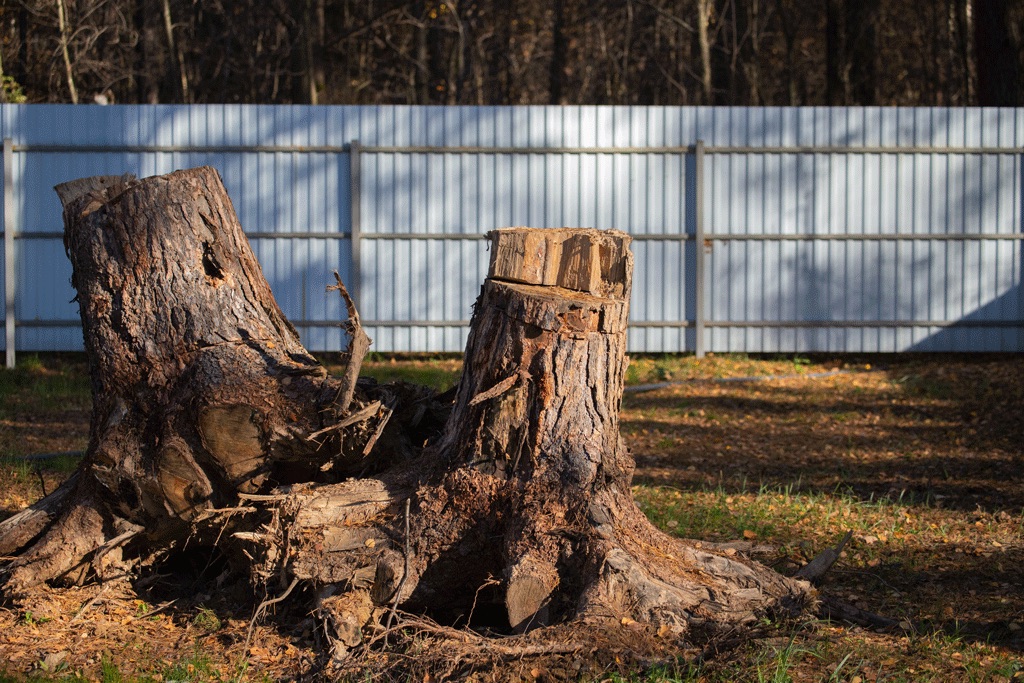
In addition to expertise and eco-friendliness, we also look for a service provider that offers transparent pricing and clear communication throughout the process. Understanding the costs involved and being kept informed every step of the way fosters trust and a sense of collaboration between us and the service provider. This transparency builds a strong foundation for a successful partnership, ensuring that the stump grinding or removal project is completed to our satisfaction.
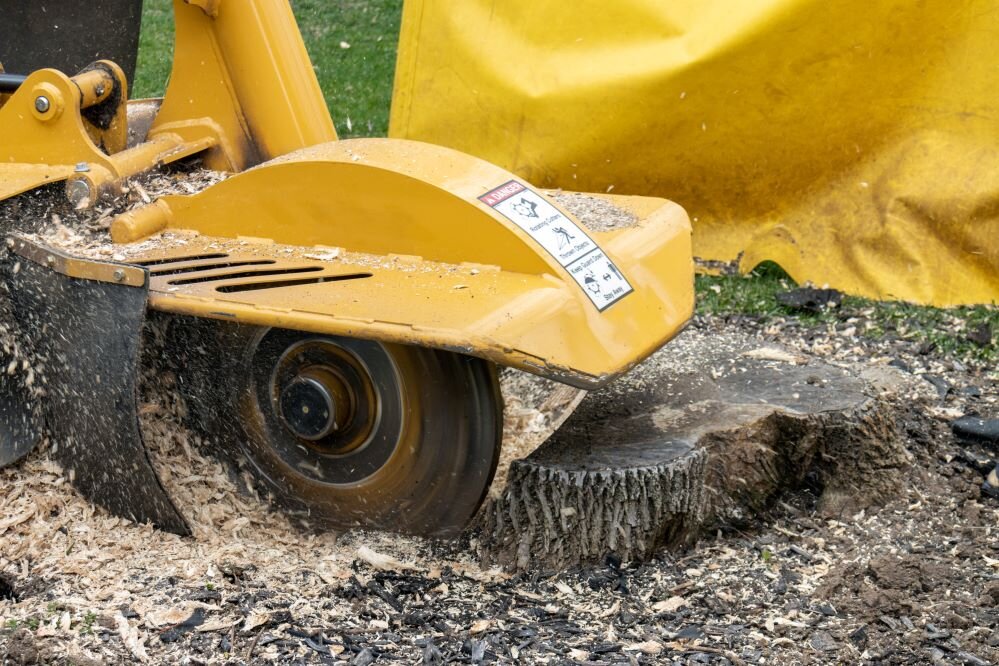
Conclusion
In conclusion, when deciding between stump grinding and stump removal, it’s important to consider the benefits of each option and the specific factors related to your situation. Stump grinding is a more cost-effective and less invasive method, while stump removal completely eliminates the stump but may be more labor-intensive. Ultimately, choosing the right service will depend on your preferences and needs.